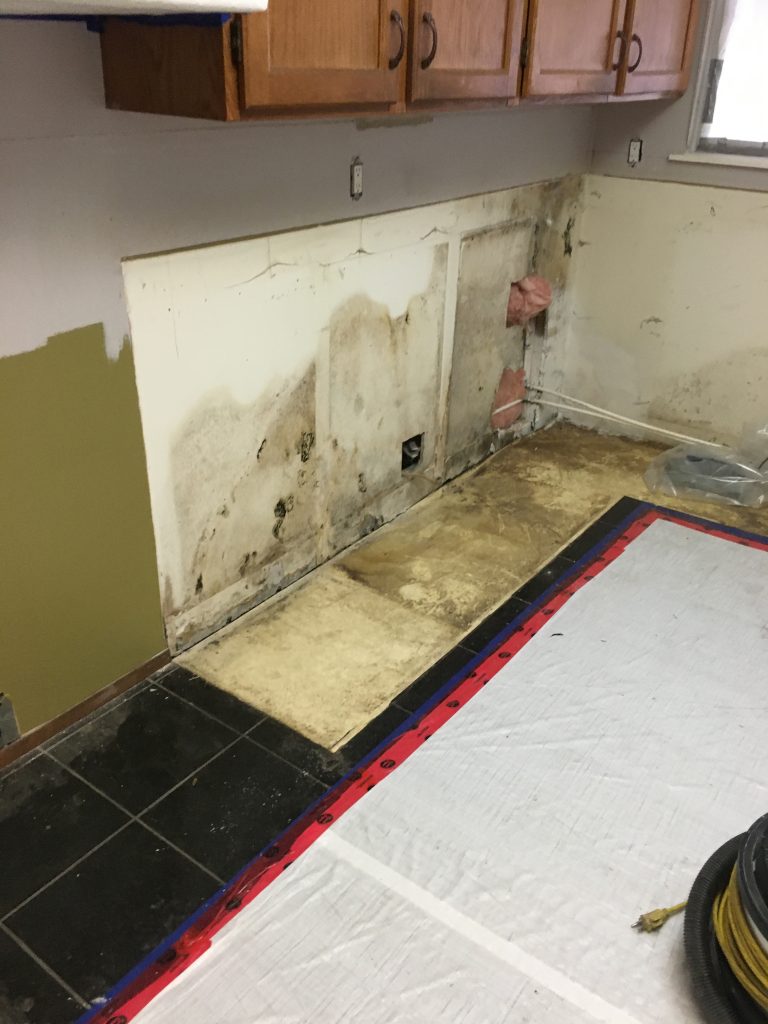Painting over mold might seem like a quick fix to cover up unsightly spots on your walls. However, this approach can lead to more significant problems in the long run. Mold is not just a cosmetic issue; it is a sign of underlying moisture problems and can pose health risks. In this blog, we will explore the consequences of painting over mold, the health hazards it poses, and the proper steps to take before repainting a mold-affected area.

The Consequences of Painting Over Mold
1. Short-Lived Solution
Painting over mold does not address the root cause of the problem. Mold thrives in damp environments, and unless the source of moisture is eliminated, the mold will continue to grow beneath the paint. Over time, the mold will likely reappear, often causing the paint to peel and bubble. This not only ruins the aesthetic of your walls but also means that your initial efforts and expenses were wasted.
2. Health Risks
Mold can cause a range of health issues, especially for individuals with respiratory problems, allergies, or weakened immune systems. Common symptoms include coughing, sneezing, skin rashes, and eye irritation. In severe cases, exposure to mold can lead to more serious respiratory conditions. Painting over mold traps it beneath the surface, allowing mold spores to continue spreading through the air and exacerbating health problems.
3. Structural Damage
If left unchecked, mold can cause significant damage to the structure of your home. Mold breaks down organic materials, meaning it can weaken walls, ceilings, and even flooring over time. By merely painting over mold, you are ignoring a potentially serious structural issue that could lead to costly repairs in the future.
The Proper Steps to Handle Mold Before Painting
To effectively deal with mold, it is crucial to follow the correct procedures to eliminate it completely before considering repainting. Here are the steps you should take:
1. Identify the Source of Moisture
The first step in tackling mold is to identify and rectify the source of moisture. Common causes include leaks in roofs, windows, or pipes, as well as poor ventilation in areas like bathrooms and basements. Fixing these issues is essential to prevent mold from recurring.
2. Assess the Extent of Mold Infestation
Determine the severity of the mold problem. Small areas of mold (less than 10 square feet) can often be handled by homeowners, but larger infestations may require professional intervention. If the mold covers a significant area or has penetrated deeply into walls, hiring a mold remediation specialist is recommended.
3. Use Proper Cleaning Methods
For small areas of mold, use a mixture of water and detergent to scrub the affected surfaces. Avoid using bleach, as it is not always effective against mold on porous surfaces like drywall. For non-porous surfaces, a solution of one cup of bleach in a gallon of water can be used, but ensure the area is well-ventilated. For larger mold impacted areas consider removing the moldy substance all together and rebuilding the drywall or replacing the wooden beams.
4. Dry the Area Thoroughly
After cleaning, it is essential to dry the area completely. Use fans and dehumidifiers to remove excess moisture from the air. This step is crucial to prevent mold from returning.
5. Apply Mold-Resistant Primer and Paint
Once the mold has been thoroughly removed and the area is dry, apply a mold-resistant primer before repainting. This type of primer is specifically designed to prevent mold growth. After the primer has dried, use a high-quality mold-resistant paint to finish the job.
Putting it all together:
Painting over mold might provide a temporary visual fix, but it does not solve the underlying problem and can lead to more significant issues over time. Mold poses serious health risks and can cause extensive structural damage if not properly addressed. By taking the correct steps to eliminate mold before repainting, you ensure a healthier living environment and protect the integrity of your home. Always remember, dealing with mold properly is not just about maintaining appearances; it’s about safeguarding your health and home.
For more information on mold and mold clean up contact us today at (403) 667-8264.
Connect with us via social media!
Instagram:
https://www.instagram.com/amity_environmental
Facebook:
https://www.facebook.com/Amityenvironmental
LinkedIn:
https://www.linkedin.com/company/amityenvironmental/mycompany/?viewAsMember=true
Tik Tok:
@amityenvironmental

